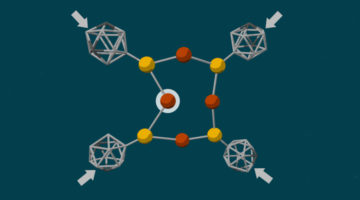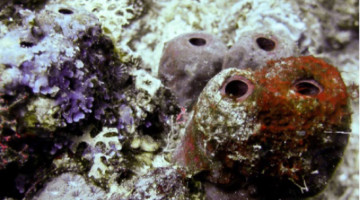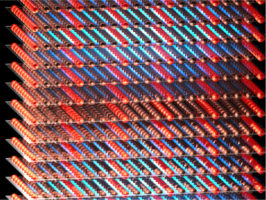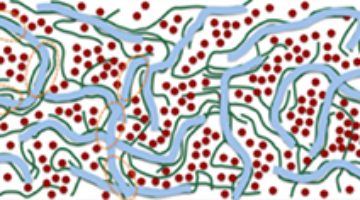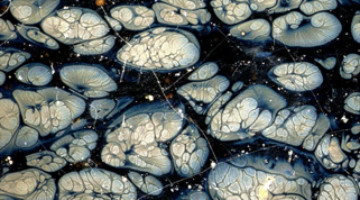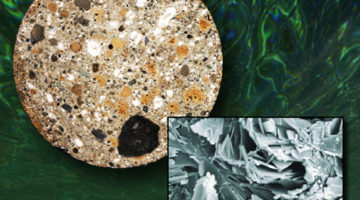“Molecular anvils” (diamondoids) were used to trigger chemical reactions using pressure, yielding products that differ from those produced in conventionally driven reactions with the same reactants. The discovery opens up new possibilities for the high-specificity synthesis of valuable but challenging molecules in an environmentally friendly process. Read more »![]()
![]()
Bacterial Symbiont Sequesters Arsenic and Barium in Sponges
Researchers used x-ray fluorescence, spectroscopy, and diffraction to study how populations of symbiotic bacteria can act as a detox organ in a host with no organs. The bacteria, members of the species Entotheonella, accumulate and mineralize large quantities of arsenic and barium in sponges. Read more »
3D Charge Order Found in Superconductor
Resonant soft x-ray diffraction studies of a cuprate high-temperature superconductor revealed a 3D, long-range charge order—the first of its kind ever reported in a cuprate—that competes with superconductivity. A better understanding of such phenomena could help in the design of more robust superconductors with higher transition temperatures. Read more »![]()
![]()
What Goes Up, Must Come Down (and Sometimes Gets Stuck)
High-pressure experiments at Beamline 12.2.2 on ferropericlase—the presumed weakest mineral found in the Earth’s lower mantle—help explain why subducted slabs of Earth’s crust stall at a depth of around 1000 km (~625 miles). Read more »![]()
Peptoid Nanosheets Offer a Diversity of Functionalities
Researchers at the ALS have recently observed peptoid nanosheets as they self-assemble at an oil–water interface. This development opens the door to designing peptoid nanosheets of increasing complexity and functionality for a broad range of applications, including improved chemical sensors and separators, and safer, more effective drug-delivery vehicles. Read more »![]()
![]()
In Situ X-Ray Scattering Helps Optimize Printed Solar Cells
Printable plastic solar cells are a potential source of inexpensive renewable energy, but the transition from lab to factory results in decreased efficiency. Now, for the first time, a miniature solar-cell printer installed in a beamline allows researchers to use x-ray diffraction and scattering to figure out why. Read more »![]()
![]()
Rare Iron Oxide in Ancient Chinese Pottery
New analysis of ancient Jian ware reveals that the distinctive pottery contains an unexpected and highly unusual form of iron oxide. This rare compound was only recently discovered and characterized by scientists and so far has been extremely difficult to create with modern techniques.
Read more »
Iron is the Key to Preserving Dinosaur Soft Tissue
Researchers studying organic material from dinosaur bones have been able to show that the samples contained original soft tissue material from Mesozoic dinosaurs. The x-ray techniques at the ALS were key to showing a possible mechanism for this unexpected preservation.
Read more »![]()
![]()
Learning from Roman Seawater Concrete
Analyses of ancient concrete samples pinpointed why the best Roman concrete was superior to most modern concrete in durability, why its manufacture was less environmentally damaging, and how these improvements could be adopted in the modern world. Read more »![]()
![]()
